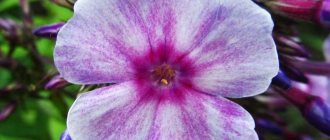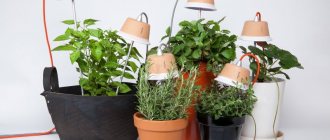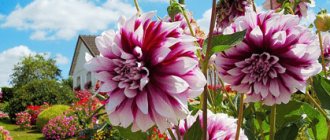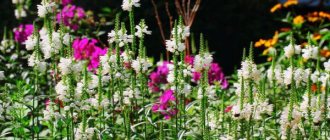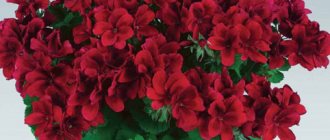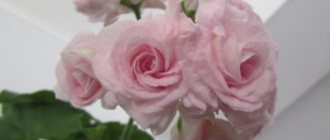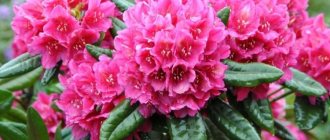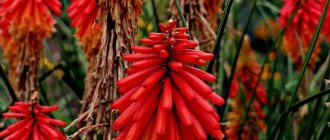The gardenia flower is a plant native to the tropics. Many gardeners agree that it is very capricious and requires careful care.
Considering that there are a sufficient number of varieties, the most optimal for home conditions is jasmine. If favorable conditions are created, this flower will delight you for a long time.
What is necessary?
Gardenia jasmine will fit well into any room with any interior. The apartment will be filled with comfort, and thanks to its unpretentiousness, it will fill the room with grace for a long time. Therefore, you need to take care of favorable conditions for the plant. Here are a few basic rules.
First of all, keep the soil moderately moist. Also, sudden changes in temperature are undesirable, and the most optimal is a twenty-degree temperature regime. The storage location should be filled with light, but direct sunlight falling on the plant is not suitable.
Flower growth is fastest in conditions with high humidity. And finally, try to use warm, purified, settled or rain water.
3.Varieties:
3.1. Jasminoid or regal gardenia - Gardenia Jasminoides
An evergreen shrub from 1.5 to 2 m high with abundantly branching, erect stems. The leaves are dark green, up to 10 cm long, thick, glossy, entire, lanceolate. The leaf blades are covered with a network of branched veins. Leaf petioles are short. The flowers are large - reaching a diameter of 8 cm, reminiscent of a rose, and emit a very intense aroma reminiscent of jasmine. Flowering occurs from May to July.
3.2.Tahitian gardenia - Gardenia taitensis
Tall multi-stemmed shrub, reaching 4 meters in height. The leaves are lanceolate, entire, dark green, arranged in opposite pairs. The leaves reach 15 - 16 cm in length. Leaf veins are often highlighted in a lighter shade. The shoots are thin, flexible, abundantly branched. The flowers are light - white or cream, up to 9 cm in diameter, and have a sweetish aroma.
3.3.Vietnamese gardenia - Gardenia vietnamensis
Fast-growing, evergreen, multi-stemmed shrubs with thin shoots up to 1 m high. The leaves are oblong, lanceolate, dark green, entire. The flowers are cream-colored, solitary, with narrow, long petals, and have a sweetish aroma that intensifies in the evening and night hours.
3.4.Gardenia Thunberg - Gardenia thunbergia
Multi-stemmed, dense, evergreen, large-flowered shrub or small flowering tree, height from 1.5 to 4.5 m. Leaves are oblong - oval, lanceolate, glossy, dark green, collected in whorls of 3 - 4. Flowers are showy, cream, large reach a diameter of 8 cm. During the flowering period, the shrub emits a pleasant aroma, which is especially intensified at night and in the evening.
3.5.Gardenia nitida - Gardenia Nitida
An evergreen multi-stemmed shrub up to 2 m high. The leaves are glossy, entire, from 8 to 18 cm long and 4 to 6 cm wide. The flowers are white, fragrant, up to 8 cm in diameter. Flower petals are often drooping. The sweetish aroma is felt at a great distance from the bush in the evening and at night.
You might also be interested in:
Hydrangea
Begonia
Hyacinth
Hibiscus
Light
As we have already mentioned, the lighting must be constant. The south side of the house is not suitable due to the presence of sunlight, so if possible, give the plant a western or eastern window.
In winter, try not to move or turn the flower, otherwise it may crumble and stop growing. Also, avoid drafts.
Varietal diversity
Several dozen varieties of tropical plants have been bred. The varieties listed below are the most widespread.
Radican Variegata
A dwarf variety with dark green foliage decorated with a cream border. The diameter of the flowers is from 3 to 5 cm.
Advantages and disadvantages
ideal for bonsai; compactness; decorativeness of leaves.
slow growth; The flowers appear only for a short period of time in summer.
I like it I don't like it
Beauty
Popular tall variety. The flowers are large, white, with double petals.
Advantages and disadvantages
highly decorative; abundance of flowering; flowers appear from early summer to late autumn.
I like it I don't like it
Chuck Hayes
The tall plant resembles a rose bush. The flowers are light beige, with slight terry.
Advantages and disadvantages
intense aroma; possibility of garden cultivation; resistance to cold.
The only negative is that the abundant flowering is short, only at the beginning of summer. Although individual buds may appear before the end of the warm season.
I like it I don't like it
Fortune
A variety with large white flowers with a cream tint.
Pros and cons: ease of care compared to other varieties. the appearance of a specific peppery odor when spraying leaves with water.
I like it I don't like it
Tahitian
A large variety with white flowers reaching 20 cm in diameter. The petals are smooth and propeller-shaped.
Advantages and disadvantages
highly decorative; delicious aroma; flowering duration.
unpredictability of flowering. Buds appear only under favorable conditions, and when this happens is impossible to predict.
I like it I don't like it
Kula
Large variety with golden flowers. The smooth petals are folded like a propeller.
Advantages and disadvantages
brightness of flowering; possibility of garden cultivation.
slow growth.
I like it I don't like it
Veitchii
A variety of jasmine gardenia with large white flowers. One of the most popular among plant growers.
Advantages and disadvantages
intense aroma; long flowering (until the end of December).
I like it I don't like it
Fortuniana
A variety with large flowers resembling camellia. Characterized by slight terry.
Advantages and disadvantages
large diameter of flowers – up to 10 cm; delicate aroma.
I like it I don't like it
First Love
A variety of jasmine gardenia with light cream flowers. Terry petals.
Advantages and disadvantages
large diameter of opened buds - up to 12 cm; exquisite aroma; flowering duration - all spring and until the end of summer; Possibility of flowering twice a year.
I like it I don't like it
Claims Hardy
Small variety with white flowers. The petals are smooth and waxy.
Advantages and disadvantages
long flowering - from spring to late summer; intense aroma.
I like it I don't like it
White Gem
A medium-sized variety, the bush grows up to 60 cm. The flowers are small, with smooth petals, and look like stars.
Advantages and disadvantages
compactness; pleasant vanilla aroma.
I like it I don't like it
Four Seasons
Low growing variety. The flowers are light beige. Characterized by slight terry.
Advantages and disadvantages
year-round flowering; compactness; resistance to temperature drops down to -5 °C.
I like it I don't like it
Temperature
In the warm season, gardenia at home requires approximately 22 degrees of heat. In winter, the flower will lay buds, and this requires a slightly lower temperature - from 16 degrees. However, do not exceed the specified limit for summer - the life process may slow down.
The air and soil must be at the same temperature - therefore strong changes are unacceptable. Two or three temperature jumps can completely ruin a flower.
Brief description of the plant
Wild perennial gardenias are found in abundance in the subtropical forests of Japan and China, which are their natural environment. Today, taking into account the contribution of breeders, botanists count about 250 plant species.
Among them, gardenias are popular in floriculture:
- jasmine;
- citriodora;
- Vietnamese;
- Tahitian.
Externally, gardenia is an evergreen shrub with woody, densely pubescent or bare shoots, opposite dark green foliage and white or pale yellow buds.
In its habitat, the jasmine variety can grow to a height of two meters, and in indoor conditions it barely reaches half a meter. Waxy white buds and thick glossy foliage that bloom for several months give the culture a decorative appearance. Large double flowers appear densely on the branches in July and fade in late autumn. Their peculiarity lies not only in their shape reminiscent of roses, but also in their pronounced pleasant aroma. Many people recognize it in perfumes, cosmetic oils and care products.
Did you know? The Japanese idolize gardenia as a symbol of secret love, and among the Chinese, the flower buds represent the 11th month of the calendar. They see in him feminine grace, fragility characteristic of aristocratic natures.
How to water?
Home care requires strict adherence to water balance. It is noteworthy that depending on the season, the flower requires different amounts of moisture. For example, when it is actively growing and developing, abundant watering is necessary after the soil dries out.
During the demi-season period, the plant should be watered once every 3-4 days after the soil has dried. During the cold season, provide water supply at a minimum level.
Use slightly warm water - it should be settled, purified or rainwater. A small amount of lemon juice in the liquid will not be amiss.
When buds begin to appear, try to provide high humidity. It would not be superfluous to organize such conditions during the rest of the plant’s life.
After the flowers open, you should stop spraying the gardenia. First of all, because they are fragile and can change their color. A small container of water located near the pot will not be superfluous.
Forget about watering gardenia in a tray!
Since the soil for replanting is light and loose - most often it is a mixture of leaf and coniferous soil - it dries out quickly, and in order to saturate it with moisture, longer contact with water is required. Such contact can be achieved by immersion watering, i.e., we take a pot with a plant, place it in an empty basin, pour it on top, let the water in the basin rise to the level of half the height of the pot, leave it for 15 minutes and then return the plants to their place. Don’t forget to remove the water from the trays after watering the gardenia. Forget about such a common technique as watering in a tray - this is extremely dangerous for gardenia.
If watering into a tray does not saturate the soil with moisture, the plant begins to suffer from waterlogging of the lower part of the substrate, while its upper part will be overdried.
Gardenia jasmine prefers moist air, so we humidify it by placing vessels with water nearby, or by installing a humidifier. It is especially sensitive to air humidity during the budding period. If the air is dry, it drops buds. Most often this happens in winter and early spring, during the period of central heating.
Each flower remains on the plant for about a week. During this time, its color changes from white to cream or pale yellow.
Trimmings and pests
If dried leaves appear, it is recommended to remove them immediately. The same goes for weak shoots and flowers. When the plant has grown sufficiently, it will not be a bad idea to thin out the leaves a little.
Basically, all gardenia problems, such as falling flowers, faded leaves, unopened buds, are associated with insufficient lighting or temperature conditions.
If yellow stains appear, we recommend slightly acidifying the soil with lemon juice, and if the plant develops too slowly, there are probably pests.
Thus, we have examined the main aspects related to home care for this flower. All you need is the right approach, following a few basic rules, and you won’t need photos of gardenia - the plant will delight you live, on your window.
Feeding rules
Enriching gardenia with nutrients is vital, otherwise it will not develop properly. Mineral complexes applied weekly and potassium-phosphorus fertilizers (used according to instructions) are used as fertilizing.
The use of long-acting complexes makes it easier for beginners. Nitrogen is added when the hydrangea fades, because its excess causes the growth of unwanted shoots.
To avoid causing unnecessary problems, it is better to use preparations marked “for flowering plants.”
Beneficial features
Photo of gardenia jasminoides
Used in folk medicine. The roots and leaves of the plant are used to prepare decoctions and infusions. The drugs are used to treat ulcers, hepatitis, mastitis, for diseases of the esophagus and to stop bleeding, and also as an antipyretic.
Gardenia in perfumery
Due to the delicate aroma of gardenia, its extract is very often used in modern perfumery. Naturally, we have now learned to make synthetic fragrances using several essential oils.
The scent of jasmine adds romance and gentle sensuality to the perfume. By using this scent, women are ready to open up to new relationships that bring passion and unsurpassed sensations. Natural gardenia extract was used by Coco Chanel to prepare her famous Chanel Gardenia perfume. Annick Goutal created her incredibly fragrant perfume called Gardenia Passion in memory of her trip to Japan.
Gardenia jasmine has become a symbol of spring, love and sensuality.
Medicinal properties
Cape jasmine is not only beautiful, but also very beneficial for health. You can prepare a decoction from the roots and fruits that will help heal tonsillitis, stomatitis, jaundice, and sore throat. You can apply the paste from the fresh plant to a wound or bruise.
You can use it externally, in the form of rinses or lotions, but under no circumstances swallow it, as there is a chance of poisoning.
When working with gardenia, be sure to wear gloves.
If you have free time for care, be sure to plant jasmine gardenias at home. Your home will be decorated with white flowers and will smell like French perfume.
